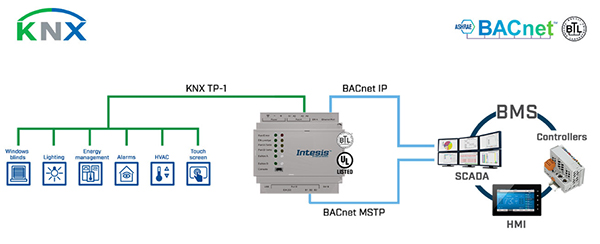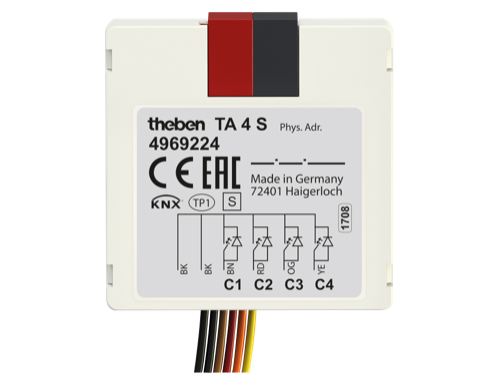
Mark Warburton outlines the different ways in which KNX systems can communicate with non-KNX systems, and offers some tips on choosing the best product for a given application.
As a technical distributor, we are regularly asked to come up with control solutions to meet specific customer or product requirements. With KNX providing such a powerful platform, there’s usually countless ways to solve any given problem.
Sometimes though, depth of choice can become the problem. With so many different ways of solving an issue, how do we work out the best approach?

Options for interfacing to other systems
One common question we get is ‘how can we interface another system or solution with KNX, such as an alarm or audio video systems?’
Option 1
The first thing to check is whether the system in question system supports direct communication with KNX. These days, that is almost always via IP. Hopefully, the external system has native support, so you just need an IP interface (tunnelling connections) or an IP router (tunnelling and multicast connections). Some systems will have to go through their own IP interface to the KNX system.
Option 2
Where IP isn’t possible, our next step is to check whether the other system supports a different open protocol, such as BACnet or Modbus. You can then use a protocol translator to interpret the commands from one system to the other.

Option 3
Alternatively, there may be an API for the system which uses an IP, RS232 or RS485 connection. This will require a gateway device on KNX, where you can enter custom commands to link the two systems together.
Option 4
If all of the above isn’t possible, we need to consider using a hardwired connection, such as 0-10V or digital inputs/outputs. This will offer more basic control but is often more than sufficient for the application. Linking an alarm system with KNX using a 4-channel binary input will give you the status of Unarmed, Armed, Alarm and Fire. This will give you all the information needed to offer a high level of integration between the systems.

If all else fails
If all these options have been explored and there is still no way to interface, then it’s pretty clear that the other system doesn’t have the same open approach KNX. This is one of the reasons we advise that systems integrators be involved early on in the design process. It will ensure all systems are able to work well together.
Differentiating between products
Where products have similar functionality, we are often asked to provide a breakdown of the differences.
The first question in this instance is ‘What you are trying to achieve?’ There can be many different iterations of a product that deliver similar outcomes. When you can get more information, it is often possible to narrow these options down and identify the only product that will work.
A great example of this is power supplies. They will all fundamentally do the same thing but there are additional functions that can only be delivered by certain products. Check out this article from the archives for more information.
Conclusion
KNX provides such a wide range of products and solutions that it can be easy to get lost in the options or end up focussing on the wrong part of a problem. Remembering to take a step back to consider why and how you are going to achieve something will help you see the problem more clearly. From there you can pick the best products for the job and ensure that they are interfacing in the most logical way.
And if you ever need help, reach out to one of the technical KNX distributors who will be able to guide and support you so you can deliver the best possible project.
Mark Warburton is a Director of Ivory Egg (UK) Ltd, a supplier of leading KNX products and provider of KNX training courses.












